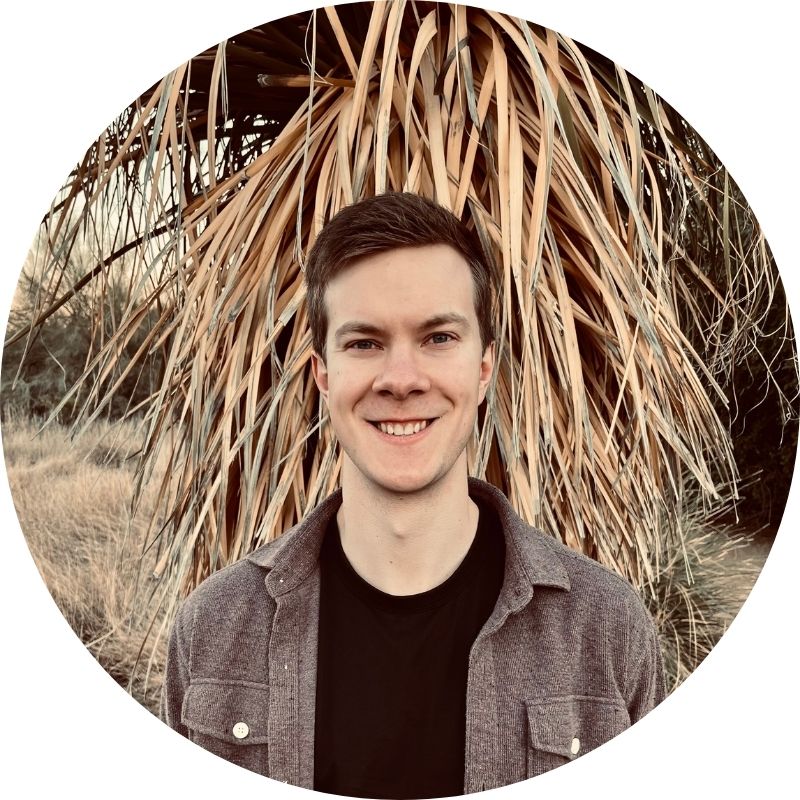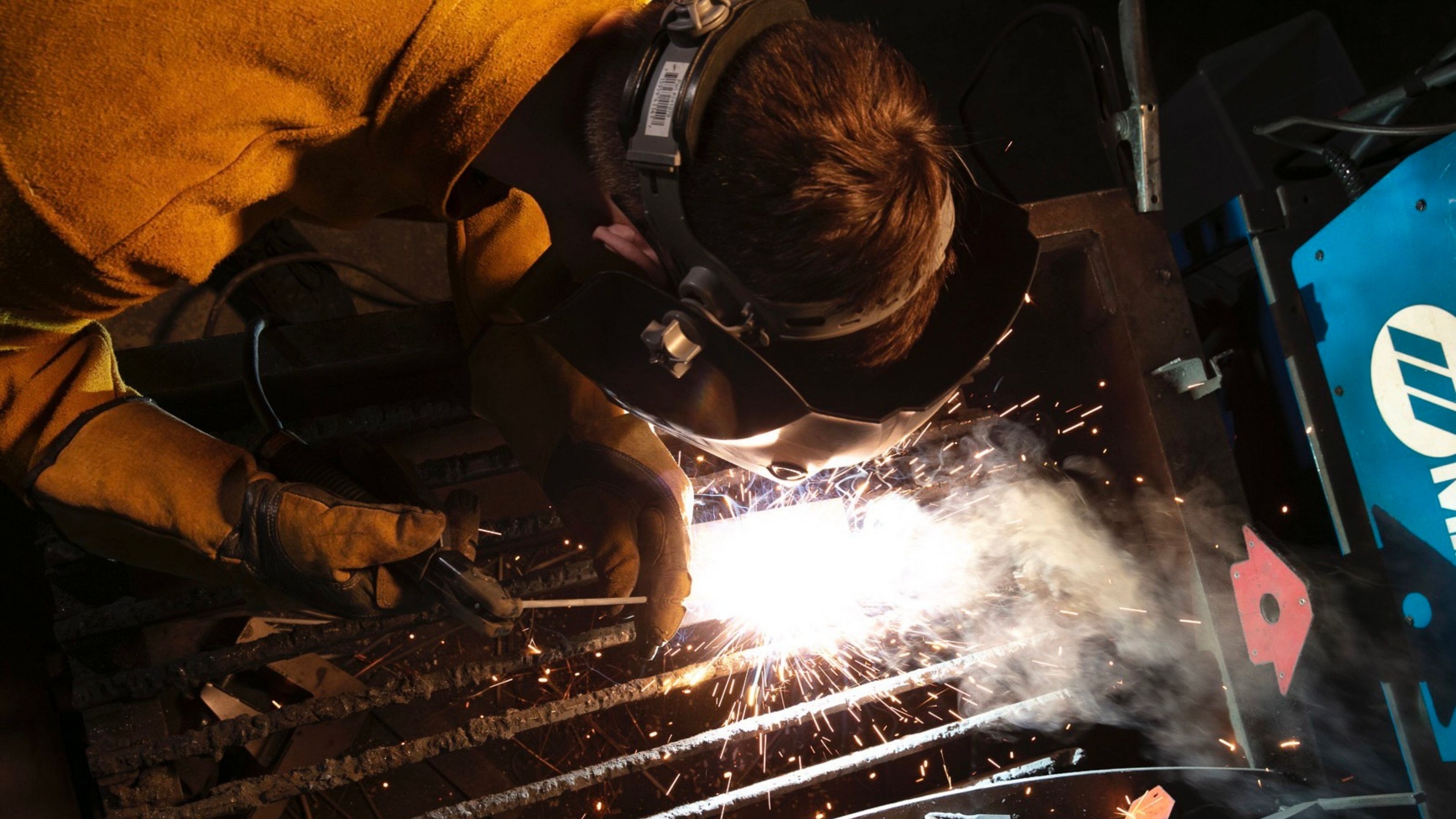Having completed his postdoctoral fellowship with the Chemical and Material Engineering Department in the Faculty of Engineering at the end of May 2022, Mitchell embraces a trial-and-error approach to describing what does and doesn’t make for a “good weld,” and translates this understanding into rules of thumb that apply to any material, now and in the future.
In this week’s spotlight, Mitchell shares how creativity, resourcefulness, adaptability, collaboration and a dash of impatience can shift an idea to the needed innovation of tomorrow.
How do you describe your work to people who don’t work in your field?
My thesis research in welding revolved around issues of thermal expansion and residual stress. If you’ve ever tried to loosen a stuck jar lid by running it under hot water, then you’ve experienced thermal expansion first-hand. When you increase the temperature of a material, you are adding energy, and one of the effects of this increase in energy is that the atoms that make up the material have a tendency to space themselves out further from their neighbours around them. This means that as a material heats up it also increases in size, although the increase is relatively minor for small temperature changes. For example, a jar lid expands by less than 0.1 mm when run under boiling water. Enough to help remove the lid, but barely enough to notice.
Welding involves extremely large temperature changes, and even more importantly these temperature changes are not uniform. Material closer to a weld gets much hotter than material further away. Residual stresses are the result of different parts of the material trying to increase in size at different rates due to these temperature differences. This can create distortion and other changes in shape of the material as the stresses inside push and pull in different directions. My work aims to create tools for predicting how much stress and distortion is created by a particular welding procedure and then use this understanding to help design better welding processes.
What’s one big problem you want to solve through your work?
Welding remains a field where trial-and-error is still one of the most oft-used methods for new process development. When you want to quickly come up with a procedure to join two parts together, it's typically both easy enough and cheap enough to just start trying different things, and hopefully before long you end up with something that works. This process relies on experience and intuition, which means it tends to fall apart when working with new and unfamiliar materials. The main goal of my work, and many of my colleagues, is to find ways to mathematically describe what does and doesn’t make for a “good weld,” and translate this understanding into rules of thumb that apply to any material, now and in the future.
What does the word “innovation” mean to you?
There is a phrase we use when recruiting new members to our lab: that it doesn’t really matter what type of research you want to do, because we can find a way to use welding as an “excuse” to study almost anything. I chuckled a bit when I first heard this expression as an undergrad summer research student, but looking back after nearly a decade of working in the field of welding, it strikes me that this has become more than an inside joke, and sums up rather well my feelings on what it means to innovate, and to be an innovator.
I look at innovation as a process of “carpe diem,” looking where you want to go and what tools you have around you and then immediately getting to work using those tools to pursue your goal. As a chronically impatient person, I’m admittedly biased, but I would argue that many of the best innovators are in a hurry to get to the future and aren’t willing to wait around for the perfect resources to appear, but are rather willing to make use of what they have on hand in a new or creative way.
What’s been your biggest a-ha moment — in life or work — so far?
I sometimes think that if I hadn’t gone into engineering, I could have been an archeologist (although I’m not big on snakes). In all seriousness, one of the things I surprisingly enjoyed about research was the time I spent combing through old documents and trying to piece together information from the past. Welding, as both a practice and topic of scientific inquiry, has been around for more than a hundred years. Even today, with all our computation resources and technological advances, there remains a wealth of knowledge from the early 20th century that is as relevant today as it was when first published. One of the biggest “a-ha” moments for me, came when I finally tracked-down an English translation of a 75 year-old book that confirmed and supported the equations I had developed through my own work.
How do you or your team come up with your best ideas? (Do you have any rituals or habits that trigger your creative spark, for example? What do you do to create space for innovation?)
As anyone who’s ever occupied a workspace near me can attest, I have a tendency to think out loud. That said, I really believe that the use of other creative minds as a sounding board is essential to the process of innovation. One of the things that has worked best for our team, to help facilitate this collaboration, is to try and leave some time in our schedules so that we’re always free to grab a coffee, or help troubleshoot a weird computer issue. Some of the most memorable and innovative projects I’ve been involved in began as conversations about the latest Hackaday article, while waiting in a Tim Horton’s line-up.
What’s your favourite thing about working at the U of A?
Hands down, it's the people (it’s not a cliché if it's true?). I think that the sheer diversity of different researchers and specialties represented at the U of A is one of our greatest strengths, and especially so when considering an inherently multidisciplinary field, like welding. In one week, our lab can collaborate with the faculty of medicine to measure welder exposure to fumes, and the next week we’ll be hosting a professor of nuclear physics to discuss the challenges of joining the specialized materials within the environment of a reactor core. From the technical personnel in the electronics lab and machine shops, to the U of A library staff and faculty administrators, I owe a huge debt of thanks throughout my degrees to all the people who took the time to help share in my learning. I’m constantly awed and inspired by the amazing community of researchers that I continue to have the opportunity to be a part of day in and day out.
Do you have a role model at the U of A? How have they influenced you
Dr. Goetz Dapp, is the Associate Director of the Canadian Centre for Welding and Joining (CCWJ), and someone I have had the privilege of considering both a mentor and a friend throughout my time at the U of A. Suffice it to say that I am one among many who can credit the completion of their degree, in no small part, to the support and guidance he provided along the way. Goetz has influenced me to never pass up an opportunity to expand my skill set and collaborate on something new. Tinkering with electronics circuits and leveraging the flexibility of open-source software are both areas I first pursued with Goetz's enthusiastic encouragement, and have since become invaluable parts of my toolkit as an engineer.
What’s next for you? Do you have any new projects on the horizon?
Since completing my PhD I’ve had the opportunity to test some of the math and equations from my graduate work out in the field in an industrial laser welding facility. A lot of the work I’ve been doing lately involves using welding to “clad” a small layer of protective material to repair or protect the surface of metal components. Additive manufacturing with plastics has become increasingly popular in recent years with the advent of cheap and performant desktop 3D printers, and at its core cladding is just 3D printing with metal. Although working with metals involves some unique challenges, there are also some really exciting opportunities to leverage recent innovations in both welding and 3D printing to help improve and enhance the laser cladding process.
This conversation has been edited for brevity and clarity.
Innovator Spotlight is a series that introduces you to a faculty or staff member whose big ideas are making a big difference.
Do you know someone who’s breaking boundaries at the U of A? (Maybe it’s you!) We’re interested in hearing from people who are creating new solutions to make our world better. We want to feature people working across all disciplines, whether they’re championing bold ways of thinking, driving discovery or translating insights from the lab into the market.
Get in touch at blog@ualberta.ca.

About Mitchell
Mitchell is currently completing an industrial post-doctoral fellowship at the Canadian Centre for Welding and Joining (CCWJ), in partnership with MITACS and Apollo-Clad Laser Cladding, a division of Apollo Machine and Welding. He obtained his PhD in Materials Engineering (‘21) from the University of Alberta, as well as a BSc in Mechanical Engineering (‘15). Mitchell’s graduate research focused on the development of predictive expressions for welding residual stress and distortion. His thesis was recently recognized by the International Institute of Welding (IIW) as the 2022 recipient of the Henry Granjon Prize - Category C (Design & Structural Integrity). Mitchell has served as a young professional representative on the board of directors for both the IIW and American Welding Society (AWS). He is also currently a member of the AWS Diversity, Equity, and Inclusion Committee, and an active participant in the local chapter of the Canadian welding technical society, CWB Association. Mitchell’s current work is focused on combining state-of-the-art experimental and analytical modelling techniques to optimize catchment efficiency in powder-fed coaxial laser cladding.
